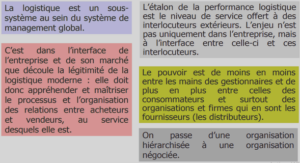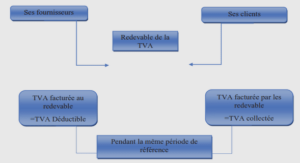Fire is a key process shaping forested ecosystems throughout Canada (Weber & Stocks 1998; Payette 1992; Heinselman 1981 ). These systems and their components (i.e. communities, individual species, and processes) are affected and have adapted to interaction with fire over time (Weber & Stocks 1998). However, fire exhibits variability in severity, size, and time between events at all spatial scales (Bergeron et al 2001; Whelan 1995; Payette 1 992; Flannigan & Van Wagner 1991 ). Fire can vary from a light surface burn affecting only understory vegetation to an intense stand replacing crown event. The area burned may be over an entire region, or on a more local scale disturbing only single stands. Some areas may burn frequently while others do not experience any fire for thousands of years. It is the interaction and variation of the above elements that influence and characterize the fire regime on the regional, landscape, and local scales.
Regional scale climate patterns synchronize fire occurrence across large areas (Flannigan et al 2000; Kitzberger et al 1997; Swetnam & Baisan 1996; Johnson & Wowchuck 1993; Swetnam & Betncourt 1990). A classic example is found in the southwestern United States where interannual variation in moisture availability has been observed to control and time region wide fire patterns (Swetnam & Betancourt 1990). Work in the coniferous forests of the southern Canadian Rockies has shown average fire frequency in terms of inter-fire interval spacing to be extraordinarily uniform (Johnson & Wowchuck 1993) with synoptic-scale weather mechanisms functioning as controls. A difference in annual a rea burned between large and small fire years was related to differences in fuel moisture caused by mid-tropospheric anomalies in the Northern Hemisphere. However, shifts in regional climate may alter natural fire patterns, which may become the means for majo ecosystem alteration (Stocks 1993). A reduction in fire frequency attributed to large-scale climate chan9e following the end of the « Little Ice Age » has been identified in many different parts of the boreal forest (- 1850 AD; Johnson et al 1990; Johnson & Larsen 1991; Bergeron 1991; Bergeron & Archambault 1993; Engelmark et al 1994; Weir et al 1999; Lesieur et a/ 2002). Furthermore, a decrease in fire frequency in much of eastern Canada has been predicted by Flannigan et al (1998) under a 2 X CO₂ scenario.
Small-scale deviations from regional fire regimes have been attributed to variations in microclimate and fuel load controlled by local site factors (Barton et al 2001; Brown et al 2001; Heyerdahl et al 2001; Turner & Romme 1994 ). Steep grades in elevation, changes in aspect, and other physiographic features have been shown to promote spatial changes in fire regimes by influencing fuel moisture, humidity, and interaction with the wind, thereby affecting the probability of fire (Whelan 1995; Rowe & Scotter 1973). At the landscape scale, f1eatures such as lakes, streams, wetlands, and moist slopes have a I so been found to function as natural firebreaks affecting fire behavior and distribution (Larsen 1997; Bergeron 1991; Romme & Knight 1981; Heinselman 1973).
Humans have strongly influenced fire regimes at all scales. Colonization has created improved access to once remote areas providing an increased potential for fire ignitions (Weber & Stocks 1998). In fact, national statistics have shown that human induced fires make up the majority of the ignition sources in Canada (Anonymous 2002). Conversely, improved access to these remote locations provides a greater chance for earlier fire detection and active suppression (Weber & Stocks 1998). Suppression activities have generally been shown to affect fire regimes by lengthening the fire cycle (Everett et al 2000; Barrett et al 1991; Tande 1979). These measures introduced to southern Cluebec in the 1920’s were, however, considered ineffective until the early 1970’s (Bergeron 1991; Lefort et al 2002).
Fire history and behavior in boreal forests have received much attention in the past two decades, which has culminated in the most recent years into natural disturbance dynamic based forest management strategies (Bergeron & Harvey 199l ; Bergeron et al 1999; Bergeron et al 2002). This approach allows for the maintenance of stand composition, structure, and functions similar to those~ occurring naturally, which has been suggested to aid in the maintenance of biodiversity and vital ecological processes to which endemic species have adapted through time (Hunter 1999; Bergeron et al 2002). In contrast, little is known concerning the role of fire at the interface of the boreal and northern temperate forests. In order to improve our knowledge and comprehension on the function fire has in this relatively unstudied area, we worked within this transition zone. Our objectives were to reconstruct and to describe the fire history in the context of stand replacing events at the northern margin of the northern temperate forest of southwestern Quebec. Spatial and temporal influences were assessed to identify their impact on the fire cycle at the local, landscape, and regional scale.
Fire history reconstruction
To obtain preliminary information on the past fire history of the study area, we used aerial photographs from the Canadian National Air Photo Library dating from 1930, 1940, and 1950 along with detailed archival information dating from ‘1945 to 1998 from the Ministere des Ressources Naturelles du Quebec (MRNQ) on stand history, composition, fire years, areas burned, and site conditions. These data were entered into a Geographic Information System (ArcNiew, version 3.1) to create an initial time since-fire map . This map shows the fire dates for the last 111 years, and stand distribution since time of last fire not accounting for other disturbance types such as insect outbreaks and windthrow.
A grid system composed of 114 polygons ( -22 km² per polygon) was overlaid on the study area to facilitate a stratified random sampling design. Fire dates were used from the archival data set for those polygons that fell within the boundaries of the burns on the initial time-since-fire map (42% of the study site). Polygons positioned outside of the mapped burn areas were visited for dendrochronological sampling in order to date stands (Heinselman 1973; Dansereau & Bergeron 1993; Bergeron et al 2001 ). For areas outside the archival data set, sample sites were chosen using an existing permanent and temporary plot system established for commercial forest inventory purposes by the MRNQ (Anonymous 2000a; Anonymous 2000b ). A sampling transect made up of two neighboring permanent or temporary plots (-500m transect) was randomly selected within each polygon out of the more than 500 plots (-1 00 permanent and -500 temporary) in the MRNQ system on the study area. For the 21 polygons without archival data and that did not contain a permanent or temporary plot, a location was randomly selected considering accessibility. A 500 meter transect was then established for sampling purposes with sampling points positioned at 150 and 450 meters.
Sample collection and analysis
At each visited site, increment cores or cross-sections were taken from five to ten trees (Kipfumueller & Baker 1998). A species hierarchy was considered when selecting individuals for sampling corresponding to sensitivity to post-fire recruitment. Selection rank (from first choice to I ast) was as follows: 1, P. banksiana Uack pine); 2, B. papyrifera (white birch)/8. alleghaniensis (yellow birch); 3, Populus tremuloides (trembling aspen); 4, P. mariana (black spruce); Ei, P. glauca (white spruce). Increment core samples were extracted from the base of the trunk (as low as possible) with attempts made to core through the pith (Phipps 1986). Since heartrot was prevalent in yellow birch trees, diameter at breast height (DBH = 1.4 m) was recorded for future attempts in age estimation. Cross-sections from fire-scarred dead snags were also taken where available (Arno & Sneck 1977). Core samples were mounted, sanded, and aged by the direct counting of the annual rings on the cores using a dissecting microscope (Phipps 1986). For cores that missed the pith, pith locators were used to estimate the number of missing years from ring curvature and growth rate (Applequist 1958). Cross-sections were prepared similarly with rings counted on two axes (Arno & Sneck 1977). A diameter-age regression curve was created for yellow birch using information gathered from the MNRQ permanent plot database . The derived diameter-age relationship was then used to estimate the ages of field-measured yellow birch individuals (Lorimer 1980).
Finally, master ring chronologies were assembled from the live samples for the purpose of dating the cross-sections of the dead snags. Crossdating was performed using identified diagnostic rings (i.e. narrow, light, and frost rings) and by measuring annual-ring widths using a Velmex measuring system to the nearest 0.01 mm for comparison with the computer program COFECHA (Yamaguchi 1991; Holmes 1999).
An estimate of time-since-last-fire (TSLF) for sampled polygons was determined when at least three individuals along a transect had an establishment date within a range of 1 0 years for jack pine and 20 years for all other species (Lesieur et al 2002). When samples did not allow for determination of the TSLF event, the polygon was characterized by the age of the oldest individual sampled along the transect (Johnson & Gutsell 1994; Bergeron & Dubuc 1989, Lesieur et al 2002). Data of this sort was considered a minimum estimate of TSLF with the date regarded as censored in further analyses (Lesieur et al 2002). Land use patterns, superficial deposit by class (glacial & fluvio-glacia ), relief (plain – slope from 0-3%, difference in height from 0-30 m/km; hill- slope from 3-5%, difference in height from 30-60 m/km; Robitaille & Saucier 1998), and mean distance to firebreak were determined for each transect. The latter is the mean of the distances to firebreaks (lake, river, stream, and bog) measured a long each of the eight cardinal directions on 1 :50 000-scale topographic maps (Lesieur et al 2002).
INTRODUCTION GENERALE |






